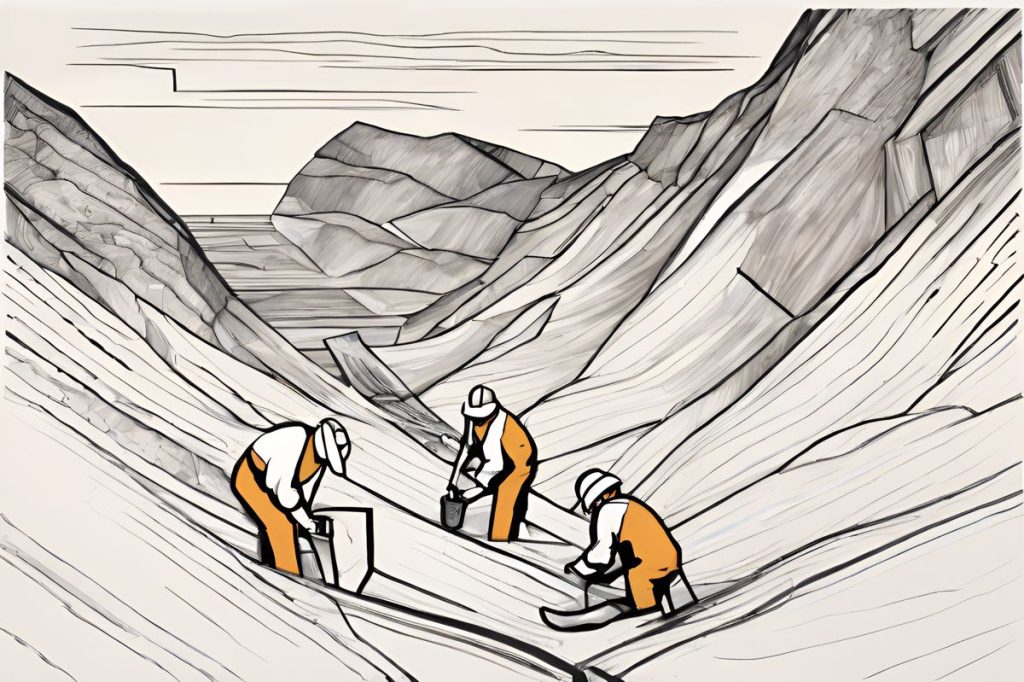Critical minerals, like lithium and rare earth metals, are essential for renewable energy technologies such as wind turbines and electric vehicle batteries. However, their scarcity presents challenges for sustainable supply and demand, urging the need for international cooperation and innovative solutions to drive the energy transition forward.
What role do critical minerals play in the energy transition?
Critical minerals, including lithium, cobalt, nickel, and rare earth metals, are indispensable for the energy transition. They are essential for renewable energy infrastructure, such as photovoltaic systems, wind turbines, and electric vehicle (EV) storage solutions. These minerals form the backbone of technologies that enable a shift to clean energy, but their scarcity poses challenges for sustainable supply and demand.
As we navigate away from traditional fossil fuels, the energy landscape is undergoing a fundamental transformation. This shift to sustainable energy sources has been marked by the growing importance of critical minerals.
The Importance of Critical Minerals
Andreas Poullikkas, the Chairman of the Cyprus Energy Regulatory Authority (CERA), illuminates the critical role of minerals such as rare earths in this sweeping change. He explains that for the energy transition to be feasible, these minerals are indispensable. They are the linchpins in powering renewable energy infrastructure, which includes photovoltaic systems, wind turbines, and storage solutions for electric vehicles (EVs).
Critical minerals encompass a variety of elements pivotal to modern technology and the operation of key industries, especially in the realm of energy production and storage. Poullikkas emphasizes their importance, stating they are the backbone of components that enable a shift to clean energy.
The Cornerstones of Energy Transition Technologies
Among these minerals, lithium, cobalt, nickel, and rare earth metals like neodymium, dysprosium, and terbium stand out. Cobalt and lithium, for instance, are central to developing high-energy-density batteries for electricity storage. Poullikkas notes the reliance of lithium-ion batteries on these minerals, highlighting their use in EVs and storage systems. Similarly, rare earths are vital for creating strong magnets essential for wind turbines and efficient electric motors in EVs.
However, the scarcity of these minerals presents significant hurdles to the broad implementation of renewable energy and clean technologies. The demand is surging as nations globally aim to reduce carbon emissions and transition away from fossil fuels.
Tackling the Challenges of Supply and Demand
This increasing demand predicates the need for sustainable and alternative supply chains, responsible mining, effective recycling, and investment in research for new materials or technologies that could alleviate our dependence on these critical elements.
Ensuring a stable supply is key to propelling the energy transition forward. Poullikkas asserts that this will require international cooperation, innovation in mining and recycling technologies, and strategic foresight to overcome supply chain vulnerabilities, environmental concerns, and geopolitical dependence.
Geopolitical Implications and Strategic Initiatives
Concentration of these minerals in certain regions raises issues of supply chain vulnerability and geopolitical tension. A few suppliers dominating the market could disrupt supply, stymieing the progress of clean energy technologies and causing price volatility.
Western countries, like the US and the EU, are responding by establishing critical minerals hubs. These hubs are intended to foster innovation, reduce reliance on foreign sources, and ensure a sustainable, reliable mineral supply chain crucial for the development of clean energy technologies.
The US harbors significant reserves of critical minerals necessary for renewable energy technology. By setting up a critical minerals hub, the US could tap into these domestic resources to generate economic growth and technological strides while also nurturing further cooperation with the EU.
The EU, recognizing the essential nature of these minerals for achieving its climate and energy objectives, is also working to create its own hub. This initiative focuses on diversifying supply sources and reducing external dependencies, thereby ensuring a sustainable supply chain within the EU for clean energy technology.
Advancing the Energy Transition
As the demand for these minerals escalates, it’s clear that a concerted effort is needed. This includes responsible mining, efficient utilization, recycling practices, and the pursuit of alternative solutions. Adopting a comprehensive approach that considers technological advancement, best mining practices, and sustainability will be crucial for leveraging the full potential of critical minerals in driving the energy transition.
What role do critical minerals play in the energy transition?
Critical minerals, including lithium, cobalt, nickel, and rare earth metals, are indispensable for the energy transition. They are essential for renewable energy infrastructure, such as photovoltaic systems, wind turbines, and electric vehicle (EV) storage solutions. These minerals form the backbone of technologies that enable a shift to clean energy, but their scarcity poses challenges for sustainable supply and demand.
How are critical minerals utilized in renewable energy technologies?
Critical minerals like lithium and cobalt are crucial for developing high-energy-density batteries used in electric vehicles and energy storage systems. Rare earth metals such as neodymium, dysprosium, and terbium are essential for producing strong magnets used in wind turbines and electric motors. Without these minerals, the widespread adoption of renewable energy technologies would be hindered.
What challenges are associated with the supply and demand of critical minerals?
The scarcity of critical minerals presents significant hurdles to the broad implementation of renewable energy and clean technologies. The increasing demand for these minerals requires sustainable and alternative supply chains, responsible mining practices, effective recycling methods, and investment in research for new materials or technologies that could reduce dependency on these critical elements.
How are countries addressing the issue of critical mineral supply chain vulnerabilities?
Countries like the US and the EU are establishing critical minerals hubs to foster innovation, reduce reliance on foreign sources, and ensure a sustainable and reliable mineral supply chain crucial for the development of clean energy technologies. By diversifying supply sources and reducing external dependencies, these initiatives aim to secure a stable supply of critical minerals needed for achieving climate and energy objectives.

